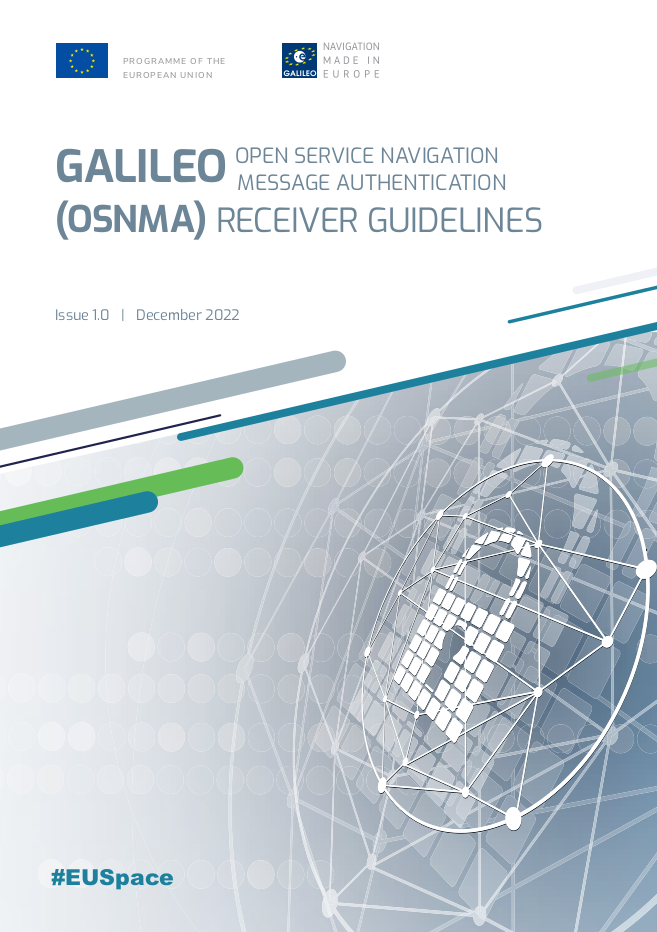The Galileo OSNMA SIS ICD and the Galileo OSNMA Receiver Guidelines have been published. They specify the baseline applicable to the OSNMA service provision phase that will start after the OSNMA Service Declaration. Its publication allows the OSNMA user community to prepare for the OSNMA service provision phase in advance of the OSNMA Service Declaration.

The European Union Agency for the Space Programme (EUSPA) together with the European Commission have published new documents:
1. Galileo Open Service Navigation Message Authentication (OSNMA) Signal-in-Space (SIS) Interface Control Document (ICD)
This document contains, together with the Galileo Open Service Signal-In-Space Interface Control Document (OS SIS ICD), all information on the OSNMA SIS and specifies the interface between the Galileo Space Segment and the Galileo User Segment.
2. Galileo Open Service Navigation Message Authentication (OSNMA) Receiver Guidelines
This document provides the guidelines for the user segment implementation of the OSNMA functionality and should be considered as a complement to the OSNMA SIS ICD. It specifies the user capabilities and steps to be implemented to verify the authenticity of the Galileo navigation message. These guidelines are drafted in a generic way and are not tailored for any specific platform or application.
These documents are applicable to the coming OSNMA service provision phase and have been developed as an evolution of the Galileo OSNMA User ICD for test phase (v1.0) and the Galileo OSNMA Receiver Guidelines for Test Phase (v1.1). The publication of these two documents is an important milestone in the OSNMA service roll-out logic. As a next step the format of the SIS being broadcast as part of the OSNMA Public Observation Test Phase will transition from its current format (as per Galileo OSNMA User ICD for test phase) to its final format (as per Galileo OSNMA SIS ICD). This transition will be announced in advance to the OSNMA user community.
You can find the new versions of both documents in the Electronic Library of the GSC website.
Media note: This feature can be republished without charge provided the European Union Agency for the Space Programme (EUSPA) is acknowledged as the source at the top or the bottom of the story. You must request permission before you use any of the photographs on the site. If you republish, we would be grateful if you could link back to the EUSPA website (https://www.euspa.europa.eu).